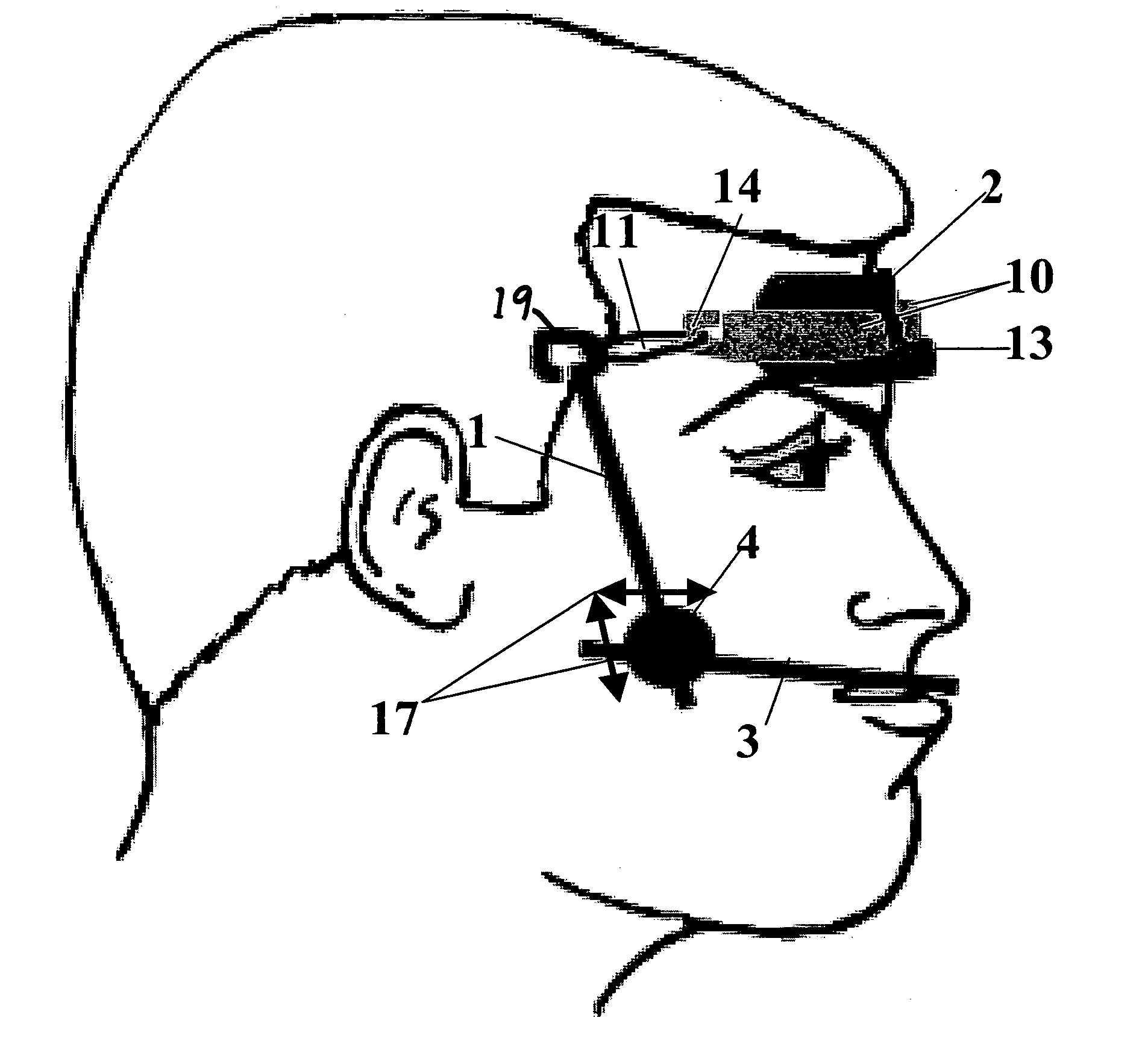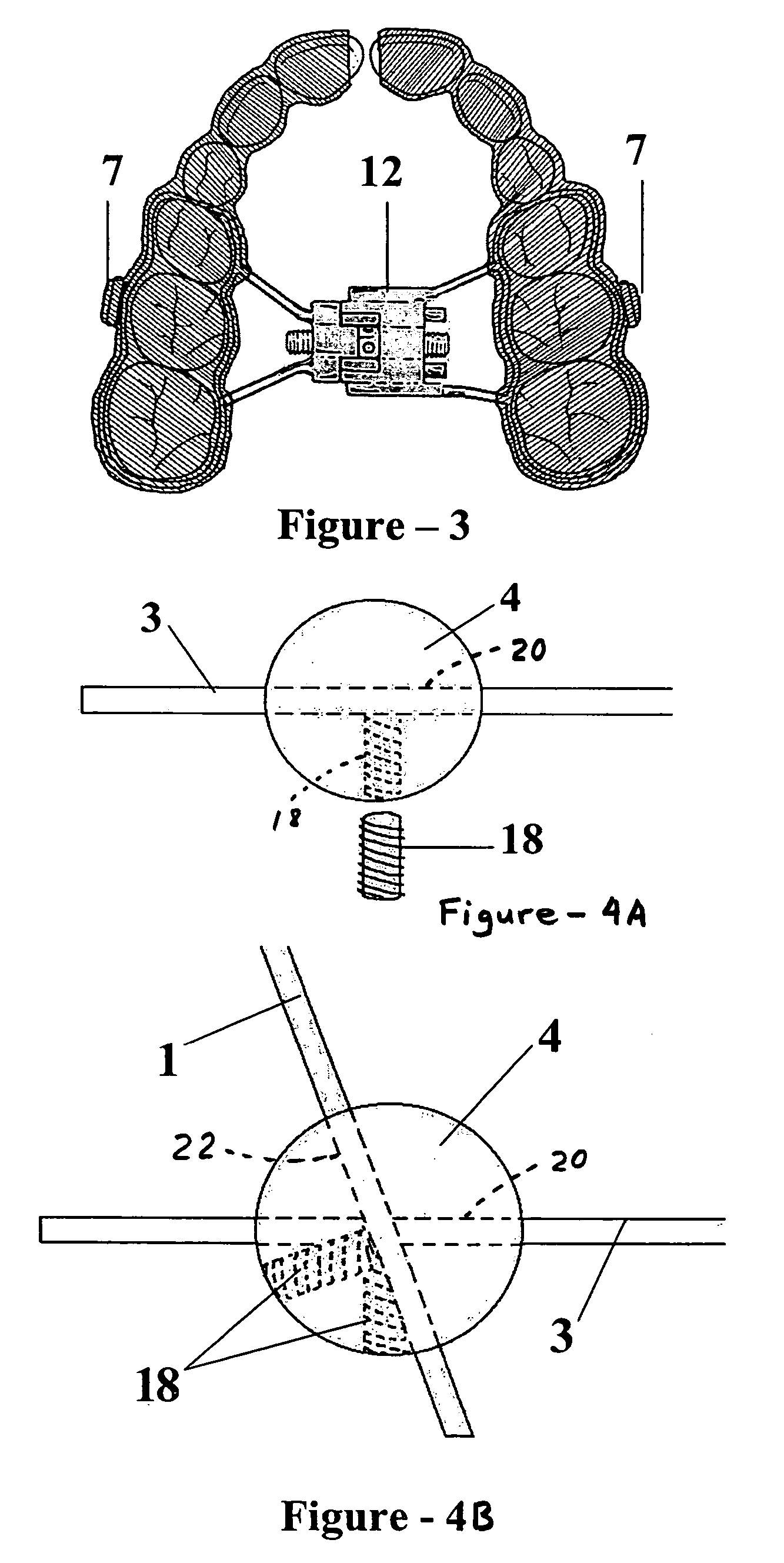Protraction headgear
a headgear and protraction technology, applied in the field of orthodontic appliances, can solve the problems of complex effects of protraction force on the maxillary, difficult treatment of a class iii malocclusion, and difficulty in removing posterior teeth, so as to correct anterior open bites
- Summary
- Abstract
- Description
- Claims
- Application Information
AI Technical Summary
Benefits of technology
Problems solved by technology
Method used
Image
Examples
Embodiment Construction
[0015]Referring to FIG. 1, the extra-oral wire framework consists of two main parts, the generally vertical bar (1) with distal hooks (19) that attaches to the forehead rest (2) via elastic elements (11), and a front generally horizontal bar (3). The appliance includes two vertical bars (1), one on each side of the patient's head. The bars (1 and 3) are adjustably fixed by adjustment blocks (4) that provide customization to each patient. A pair of set screws (18), one pair in each block (4), are used to fix the location of the vertical and horizontal bars. In particular, one set screw (18) of each pair allows for the horizontal adjustment and the other set screw (18) of each pair allows for the generally vertical adjustment. The directions of the horizontal and vertical adjustments provided by each block (4) and set screw (18) combination are indicated by arrows (17) in FIG. 1.
[0016]Intra-orally, the device is adapted for connection to the teeth via an acrylic splint type (rapid max...
PUM
 Login to View More
Login to View More Abstract
Description
Claims
Application Information
 Login to View More
Login to View More - R&D
- Intellectual Property
- Life Sciences
- Materials
- Tech Scout
- Unparalleled Data Quality
- Higher Quality Content
- 60% Fewer Hallucinations
Browse by: Latest US Patents, China's latest patents, Technical Efficacy Thesaurus, Application Domain, Technology Topic, Popular Technical Reports.
© 2025 PatSnap. All rights reserved.Legal|Privacy policy|Modern Slavery Act Transparency Statement|Sitemap|About US| Contact US: help@patsnap.com



